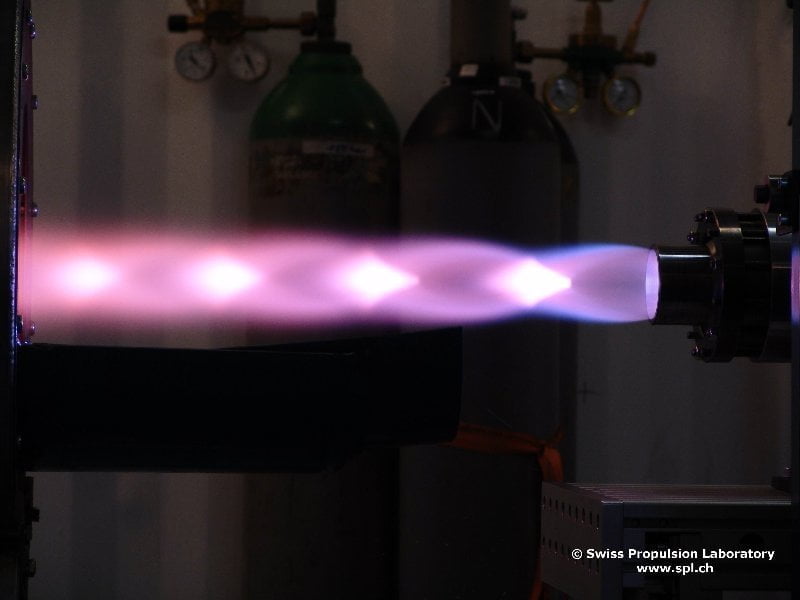staunchreality-deactivated20120 asks:
Hey there – Love the blog. Most interesting science blog I follow 🙂 This may be a silly question – is propulsion through space purely a function of exit velocity and catching gravity slingshots around planets, or is there enough of anything to push against for rocket propulsion?
Thanks! Glad you enjoy the blog. And your question is not silly at all.
Whether in the atmosphere or not, rocket engines always operate on the same principle: Newton’s 3rd law. For every force exerted, there is an equal and opposite reaction force. For a rocket, this means that the momentum of the rocket exhaust provides forward momentum–thrust–for the rocket. When acting in an atmosphere, the exhaust doesn’t push against the atmosphere in order to move the rocket–in fact, rockets have to overcome aerodynamic drag when in the atmosphere, which opposes their thrust.

While the operating principle of a rocket remains the same regardless of its surrounding, the ambient pressure (essentially zero in space and non-zero in an atmosphere) does affect the efficiency of the rocket’s nozzle, which can affect the exit velocity of the exhaust, and, thus, the efficiency of the rocket. Under ideal conditions, the exhaust should exit the nozzle at the same pressure as the ambient conditions–whatever they are. If the exhaust pressure is lower than the ambient, the exhaust can separate from the nozzle, causing instabilities in the flow and potentially damaging the nozzle. On the other hand, if the exhaust pressure is too high, then there is exhaust that could be turned into thrust that is going to waste. Unfortunately, matching the exhaust pressure to the ambient pressure is a function of the geometry of the nozzle, which is usually fixed. Engineers of rockets intended to fly from within the atmosphere to space usually have to pick a particular altitude to design around and deal with the inefficiencies while the rocket flies at other ambient conditions.
Outside of the physical mechanics of how thrust is produced, propulsion in space is dominated by the influence of orbital mechanics. Once in an orbit, a spacecraft will stay on that orbital path without expending any thrust. To change between orbits, it is necessary for the spacecraft–rocket or otherwise–to change its velocity–typically referred to as delta-v–by firing an engine or thruster. It’s also possible to change orbits using the gravity of other celestial bodies (Jupiter is a popular one) to change a spacecraft’s delta-v without expending propellant. However, fluid dynamics don’t play a big role in the process aside from the problems of fuel sloshing aboard the spacecraft and the actual mechanism by which thrust is produced.

That said, if anyone is interested in getting a better feel for how orbit mechanics work, I have two recommendations. The first is to watch this video of water droplets “orbiting” a charged knitting needle aboard the ISS. And the second is to play the game Osmos. It is like rocket propulsion and orbit mechanics in action!
(Photo credits: NASA, The Aerospace Corporation, Hemisphere Games)










